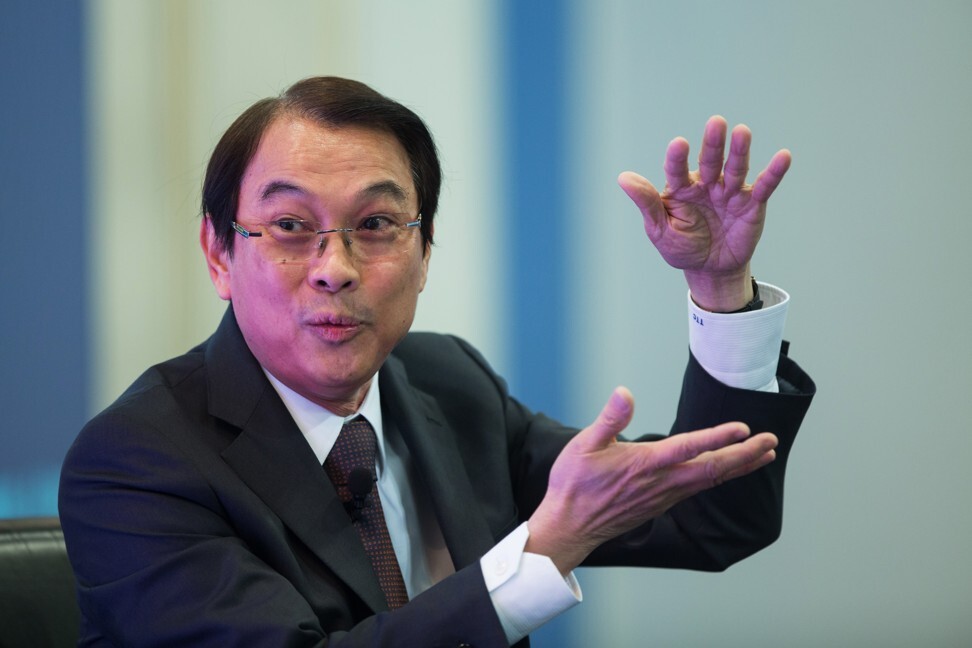How Jollibee beat McDonald’s to become the Philippines’ fast-food chain of choice – meet billionaire Tony Tan Caktiong, the ‘chickenjoy’ entrepreneur

Would you believe that Filipino fast-food chain Jollibee started as an ice cream parlour? The sight of that iconic bee logo brings a smile to any Filipino, anywhere in the world. And why wouldn't it? It's the country's equivalent to McDonald's and being home-grown, taps into local taste-buds like no other fast-food chain. That’s ultimately all down to the business smarts and eternal optimism of founder Tony Tan Caktiong.
From Fujian to Davao
Caktiong’s family were poor Chinese immigrants from Fujian province. His keen eye as a restaurateur stemmed from his father, who initially worked in kitchen operations in China and as a cook at a Buddhist monastery in Manila. They opened a restaurant afterwards in Davao, a city in the southern Philippines.
7 best vegan restaurants in Metro Manila
Inspired by a visit to an ice cream plant
Caktiong was able to complete a degree in civil engineering at the University of Santo Tomas because of his father’s restaurant business. But fate had other plans for him. In 1975, at 22 years old, he was inspired by a visit to an ice cream plant and shelled out US$7,000 to buy a franchise of Magnolia Ice Cream. He built two ice cream houses in Manila, one in Cubao and the other in Quiapo.
By now, Caktiong was a Filipino at heart. He and his wife, Grace, knew that Pinoys love food, love the aromas associated with it. That meant serving hot food and so, in the early 1970s, they alighted on serving hamburgers.
A taste for success
Caktiong’s brain for business was coupled with picky taste buds. He told Forbes in an interview in 2013, “My mother would say I was the most difficult to bring up because I was the choosiest in terms of taste, whereas my brothers would just eat anything”. Before bringing his own burgers to life, he and his wife went on a tasting tour of Manila, sampling as many burgers as they could.
Three years after opening their ice cream stores, they launched the Jollibee Yumburger. It was a hit. They dropped the ice cream franchise and added more food options such as fried chicken, spaghetti and other localised dishes. A billion-dollar franchise business was born.
Kim Kardashian and Kanye West embody America’s fast food culture
Where did the iconic Jollibee come from?
When asked, Caktiong says that the bee represents the hardworking Filipinos, and the prefix, jolly, signifies the happiness found in sharing meals. The appealing mascot has strengthened the brand too, making children quicker to drag their parents to the fast-food chain’s outlets.
Then came McDonald's
McDonald's arrived in the Philippines in the 1980s, but this didn’t deter Caktiong. He knew the local taste buds. Pinoys like spaghetti sweeter than usual, their chicken crispy and crackling in every bite. His campaign slogans like langhap-sarap (meaning the delicious aroma of food) and his never-ending quest to satisfy the Pinoy palate are what makes him and his brand effective.
Do plant-based patties taste as good as beefy ones?
Tony today

Caktiong's net worth today is estimated at US$1.7 billion, with Jollibee just one of the food chains he owns. Red Ribbon, Chowking, Greenwich Pizza, Manong Pepe's and Mang Inasal are among other well-known brands that operate under his stewardship. Jollibee has also become a global entity with branches in America, Italy, the Middle East, UK and across Asia.
Want more stories like this? Sign up here. Follow STYLE on Facebook, Instagram, YouTube and Twitter .

Big Mac? Whopper? How about a Yumburger – while much of the world fell for American fast food chains, the Philippines built its own proudly home-grown brand attuned to Southeast Asian taste-buds – but it also made one man very, very rich